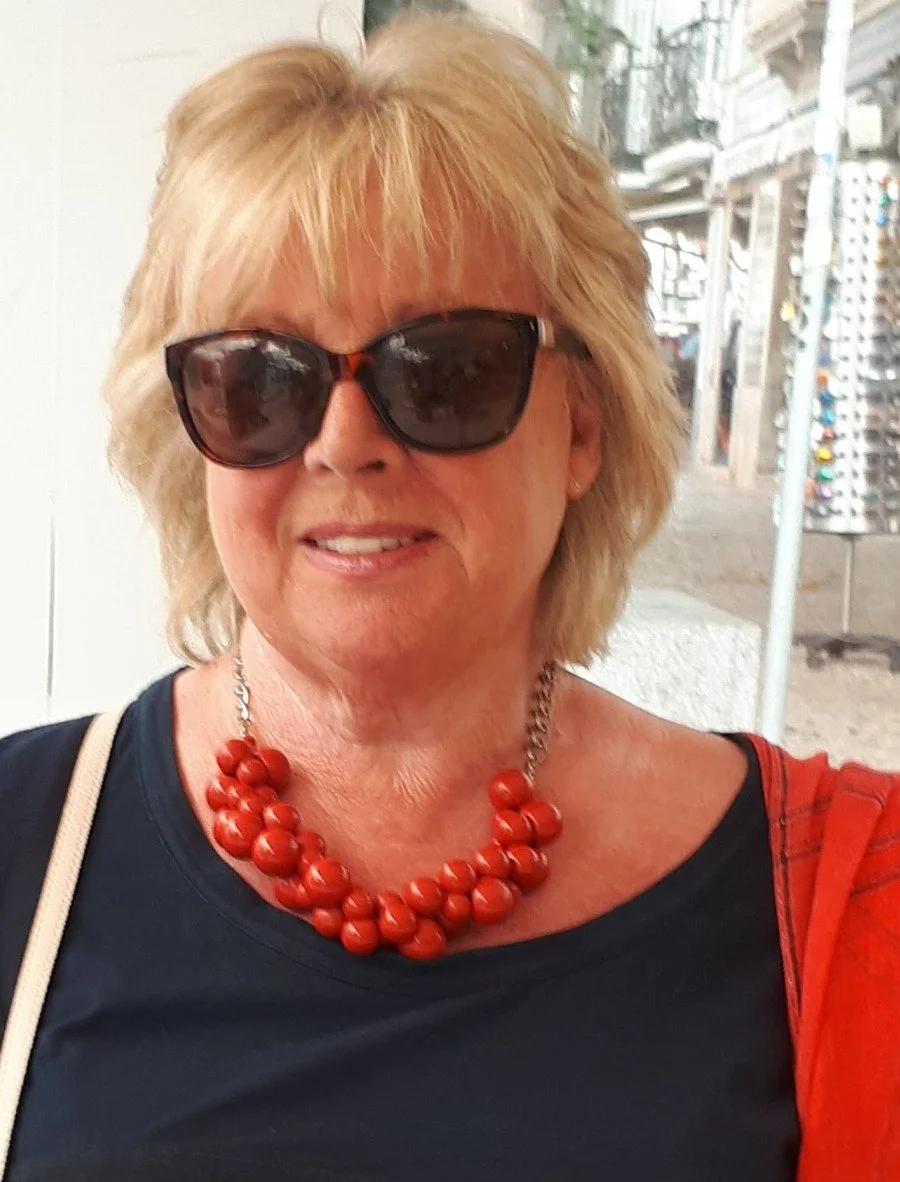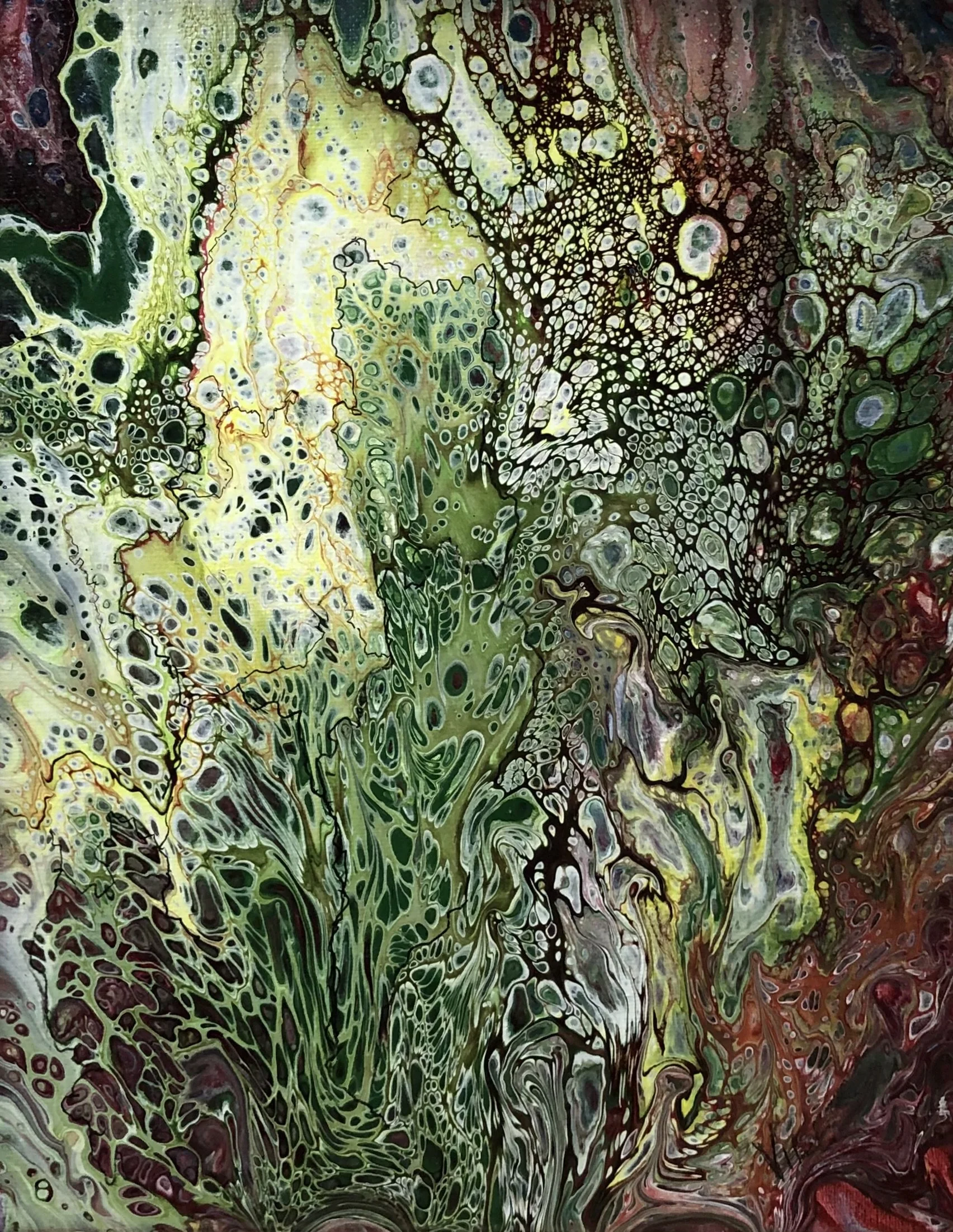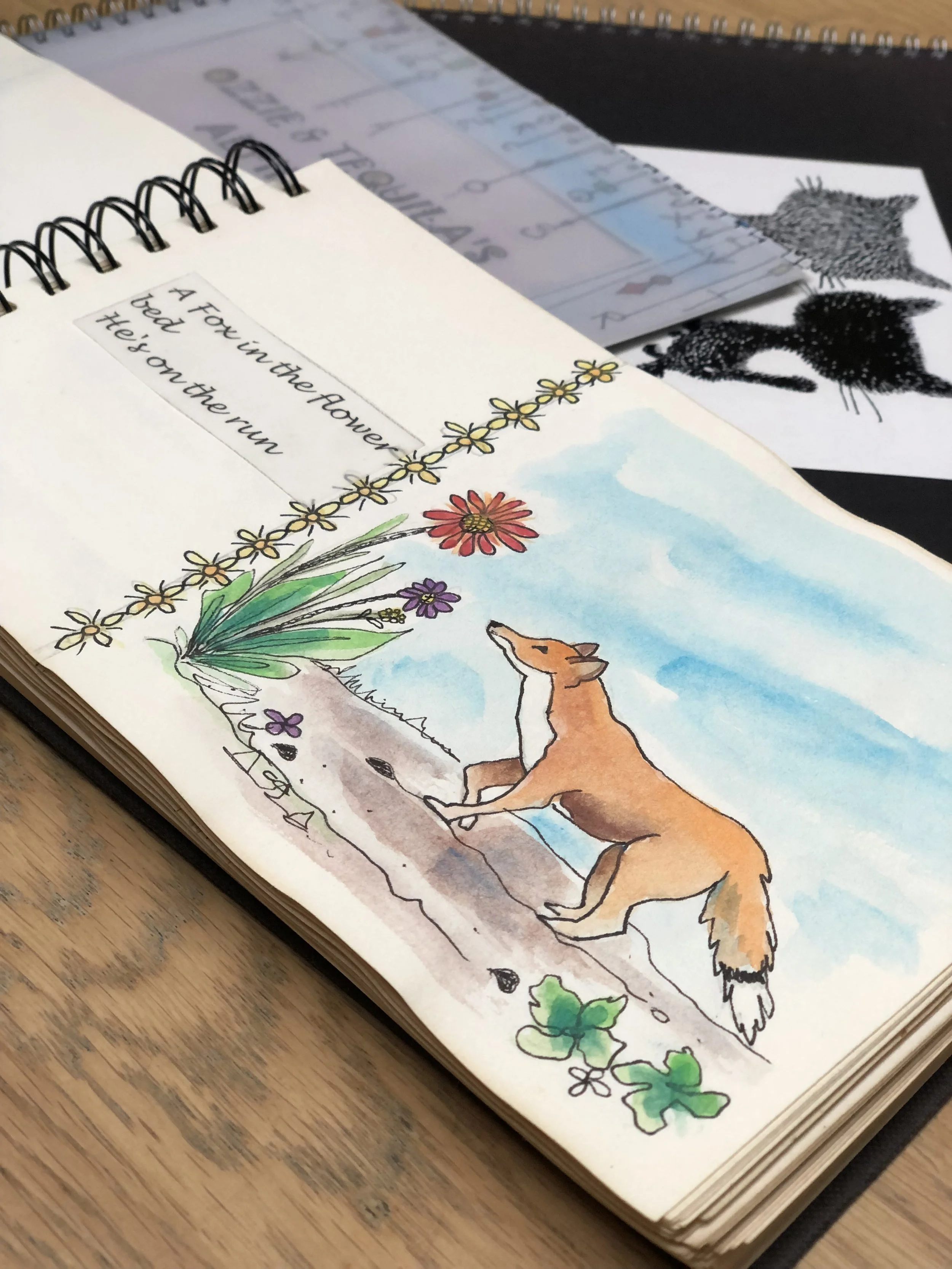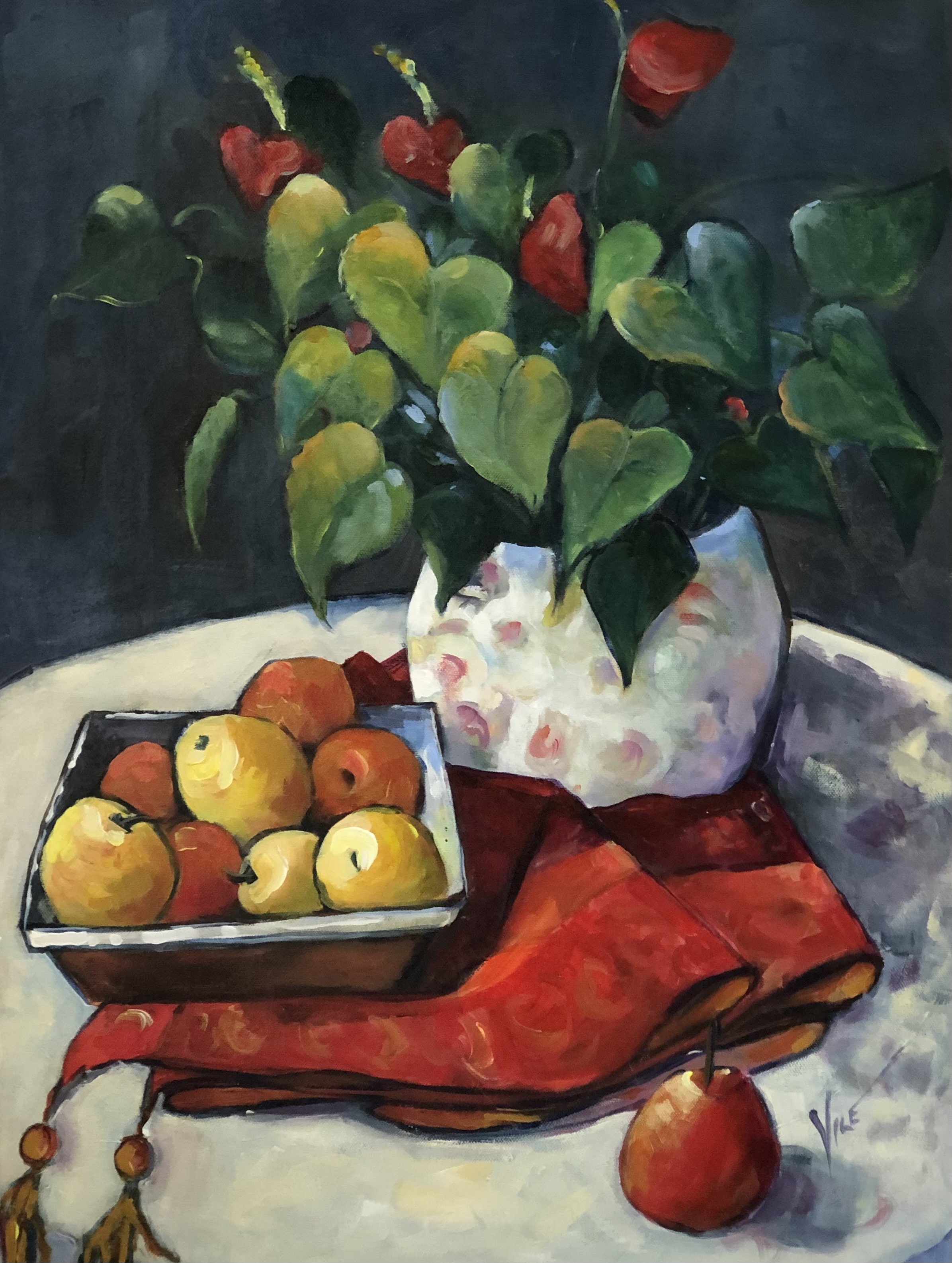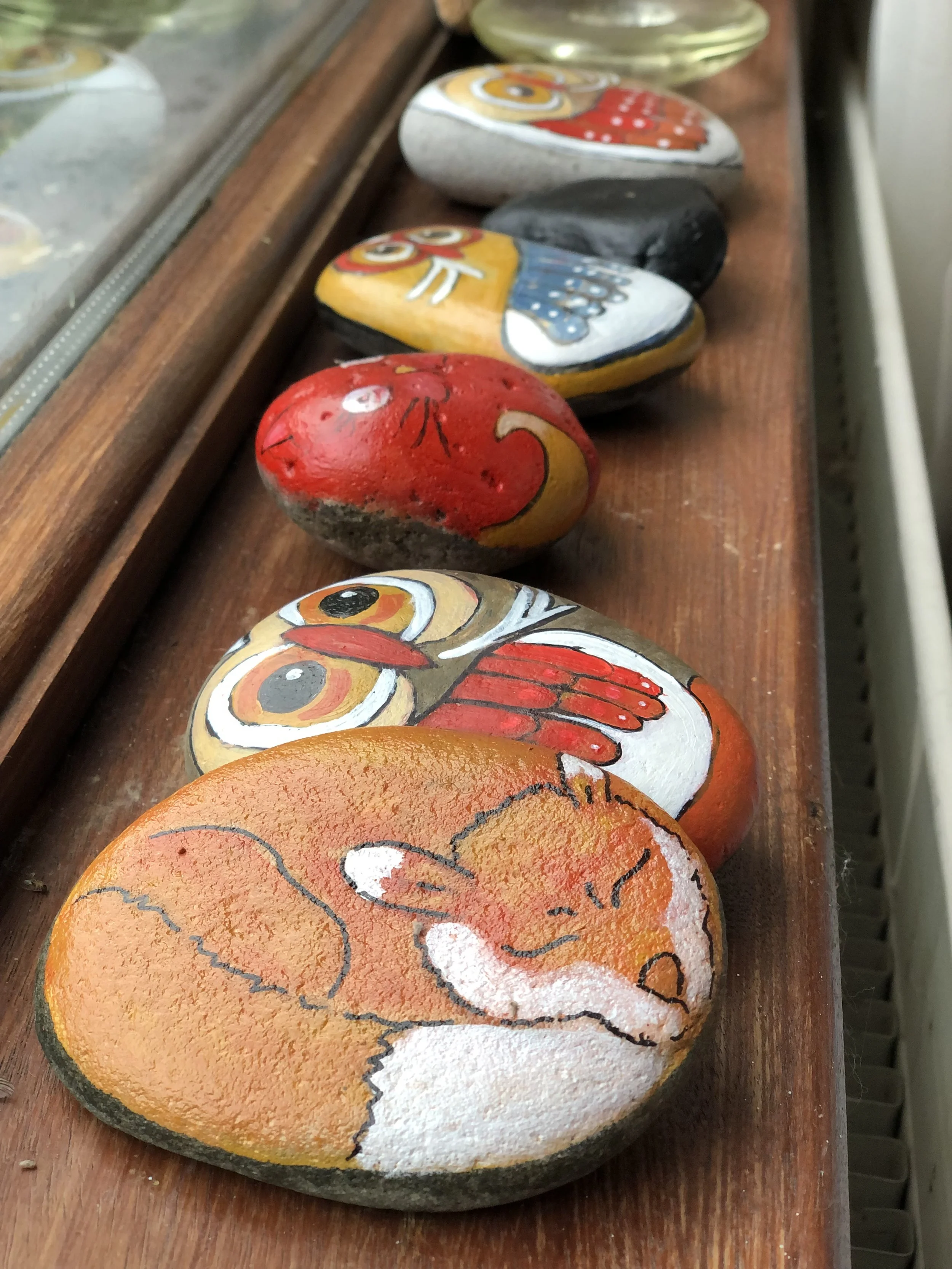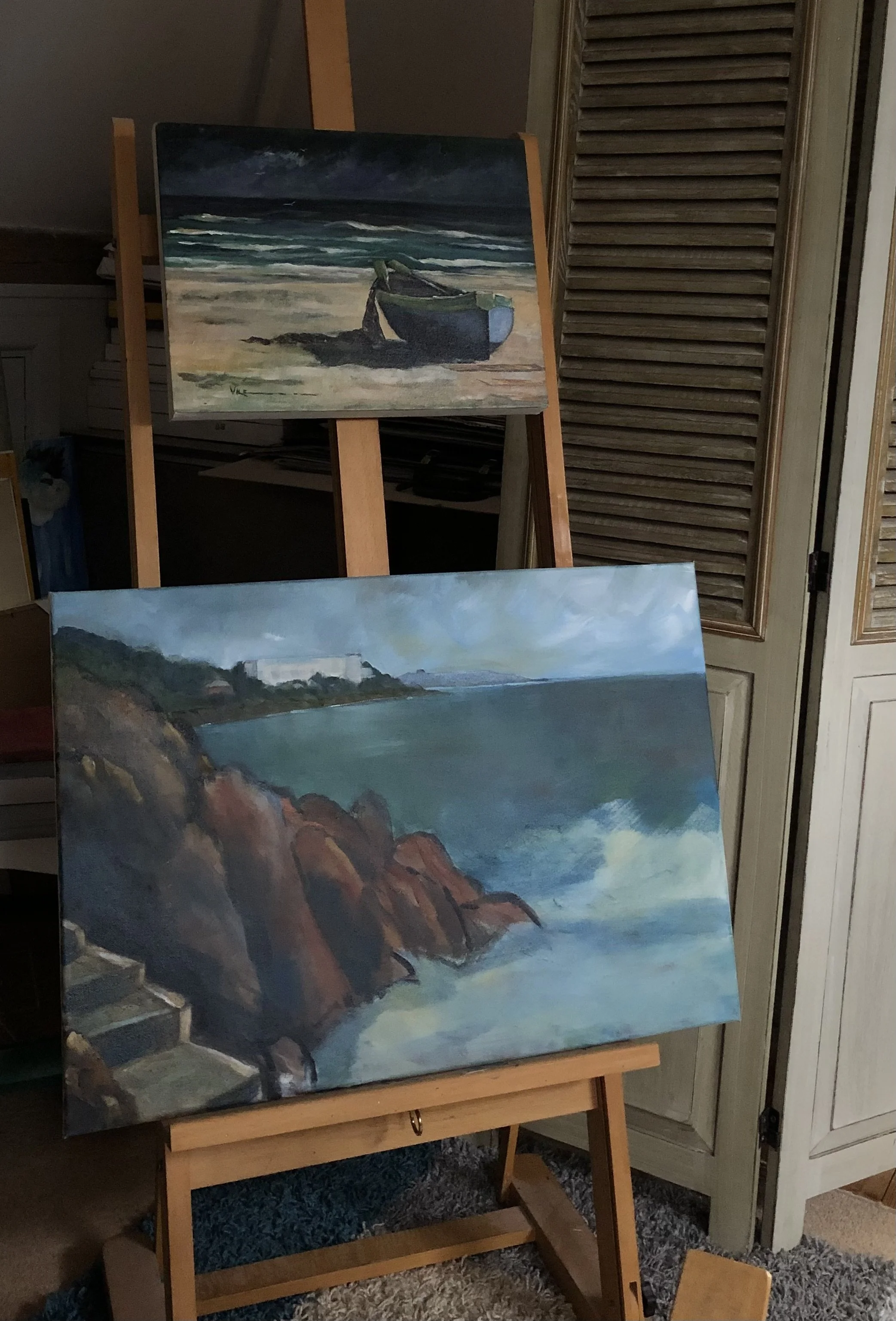DAS Member Interview - Mary Kavanagh
Mary, how did you become interested in painting?
The UK in the 1950s had a distinctly different atmosphere unlike today, there were fewer stimuli, but I cherished my art classes and had an excellent, young, and progressive art teacher who motivated us to explore things through field trips, especially for O levels. My passion for art ignited during that time. Despite my love for school, my family's move back to Ireland disrupted my plans of attending art college.
So with art not an option, what did you do after you finished school?
On arriving in Ireland I pursued children's nursing in Temple St, undergoing strict discipline with the nuns. Sleeping in the hospital was mandatory, and we were allowed just one late pass per month. Despite the limited freedom (I had to be in by nine every night) and making it a challenging period of discipline it didn’t do me any harm. Talking to friends from that time, we acknowledge the toughness, but being young at 16/17, we didn't know any different. The nuns were tougher than those I had in school in England.
Upon finishing, I married Tommy whom I had met in 1964 when first arriving in Ireland. With three kids by 24, I had little time for much else. It wasn't until having Sinéad (my third child) that I joined the ICA (the Irish Country Woman’s Association), which marked the return of my independence as the children were now all in school.
Was there a certain person who inspired you artistically?
My mother was skilled at sewing and painting, creating our clothes and decorating the home. I inherited creativity from both my parents; my dad, who had served in the merchant navy during the war, taught me to crochet when I was about 11, he also knew how to embroider.
In the late 60s early 70s when I was having my kids I didn’t work, women were expected to give up work when they got married. So the ICA provided a fantastic outlet for creativity during my time as a stay-at-home mom, offering various crafts, cookery, painting scenery for various plays plus a great social outlet.
I religiously bought and collected monthly Craft books from the Newsagents that built into bound volumes and I would get great inspiration from these, subsequently making and selling thread and nail paintings plus transforming our home.
So there’s an impulsivity and a spontaneity to how you create.
I would spontaneously decide to paint the lounge wall orange or get walls knocked down while my husband was away so when he returned, he never knew what changes would have been made in the house. I recall taking a woodcarving night class once, I enjoyed the experience but didn’t pursue it as an art. I also find repeating the same types of paintings tedious. My diverse range of artworks and styles reflects my difficulty sticking to one thing, but I believe art is about growth and practice. Currently, I'm working on an abstract fish mural on the bathroom wall.
Growing up around my dad, I gained confidence by assisting him with various DIY and creative tasks. While my willingness to lend a hand to most tasks can result in it being expected of me, I only tackle projects when I want to, like painting the hall recently. During lockdown, I painted the house, designed the garden, and finally pursued my long-standing interest in quilting by using my husband's old shirts and some gorgeous patchwork patterns. At one stage the sewing machine sat at one end of the table and the paints at the other plus I was also writing and illustrating two books for our grandkids on the adventures of my cats Ozzie and Tequila. The house, filled with my paintings and artwork keeps memories with the kids and grandkids fresh, so it feels complete to me.
Do you have any rituals before you go to paint?
Before delving into painting, I ensure that the house is well-organised and sorted to clear my mind. I often find myself working on 2 or 3 paintings simultaneously, not out of boredom, but due to my passion for setting up artistic compositions. The process involves conceiving ideas, executing initial drafts, and strategically placing the artwork where I can continuously contemplate it, allowing me to plan my next steps. Organisational preparedness is crucial for me, as it enables my mind to concentrate fully on the creative endeavour.
What's your chosen medium?
I love working with watercolours and often choose them for commissions when I feel they're suitable. While I have a variety of paintings in different mediums at home, acrylics are probably my favourite due to their quick drying time. During a painting trip to France with artists Jan Hyland, Paula Quinn, Janetta Mellet, and others, we used acrylics for their practicality in transport. The venue, located in Moux, France, was owned by an artist from Cork, and her English husband served as the chef. The experience was enriching, and I discovered the versatility of acrylics – they can stand alone or serve as a base for oil paintings.
View from the house
Though I appreciate the ease of acrylics, especially for travel, I find oils more suitable for portraiture, despite having completed numerous portraits, including those of my grandchildren. The softness and layering capabilities of oils appeal to me more than the vibrancy of acrylics, which can fade as they dry. Travelling to San Francisco to visit my son provides inspiration, with the fantastic views from his house influencing my work.
During a journey across Australia with my brother, I developed an interest in painting birds. A peculiar encounter occurred when we passed a tree that seemed filled with birds, but upon closer inspection, it turned out to be adorned with shoes. Further along, we found another tree adorned with bottles, and beneath it, a person (mannequin) in a deckchair appeared intoxicated. This bizarre scene unfolded in the vast Nullarbor desert, known for its straight roads and occasional signs warning of potential aircraft landings, often belonging to flying doctors. This trip served as huge creative inspiration to me.
‘Bottle tree’
‘Shoe tree’ in the Nullarbor Desert
Have you been part of any other societies?
I was a member and president of the Glenageary Art Society for many years which held annual exhibitions at Grace and Harvey. On leaving I ran Art classes for a few years in my home then joined the Dublin Art Society. I also participated in paint-along days with the Dublin Art Society at the Dun Laoghaire Golf Club. Revisiting those experiences would be wonderful.
How did Dublin Art Society come about for you?
I attended classes with Carol Callaghan in Shanganagh Vale and there I learned about the Dublin Art Society. Jan Hyland persuaded me to join, and I quickly became treasurer, then secretary, and eventually president. Before the pandemic, we had submission days where members gathered, paid subs, and connected. I’m hoping for more in-person meet-ups with members as it’s great to connect face-to-face and chat.


